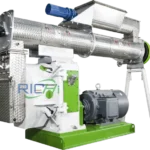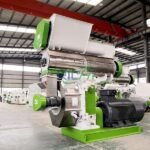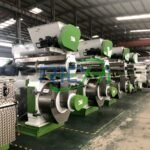A 30 tons per hour (t/h) feed mill represents a substantial investment and operational capacity within the animal feed sector. The success and profitability of such a facility hinge on effective production planning that can adapt to changes in market demand. This article examines how fluctuations in market demand influence production planning in a 30t/h feed mill factory and offers strategies for managing these variations.
Understanding Market Demand Fluctuations
Market demand for animal feed can vary due to several factors, including:
- Seasonal Changes: Demand for animal feed typically experiences seasonal variations, influenced by agricultural cycles, weather conditions, and livestock breeding practices.
- Economic Factors: Economic conditions, such as downturns or booms, can impact livestock farming activities, thereby affecting feed demand.
- Feed Prices and Raw Material Costs: Variations in feed prices and the cost of raw materials (e.g., corn, soybeans) can influence demand levels.
- Livestock Population Dynamics: Changes in livestock populations, often driven by disease outbreaks, government policies, or market trends, can significantly impact feed demand.
- Market Competition: The actions of competitors can also affect the demand for a specific feed mill’s products.
- Government Regulations: Agricultural, trade, and environmental policies can influence the demand for animal feed.
- Technological Innovations: Advancements in feed production and livestock farming can alter demand patterns.
Impact on Production Planning
Adjusting Production Schedules
When market demand rises, the feed mill may need to increase its operational capacity to meet that demand. Conversely, during periods of lower demand, the mill might reduce its operating hours to prevent overproduction and excess inventory.
- High Demand Scenario: Extend operating hours to 24/7 to maximize production capacity.
- Low Demand Scenario: Scale back operating hours to 16 hours per day to minimize surplus production.
Inventory Management
Efficient inventory management is essential for balancing production with demand. Maintaining adequate inventory levels during peak demand periods ensures timely delivery to customers, while reducing inventory during low demand periods can lower storage costs and spoilage risks.
- Strategies:
- Implement just-in-time inventory practices to align production with demand.
- Use data analytics to forecast demand and adjust inventory levels accordingly.

Resource Allocation
Fluctuating demand can impact the allocation of resources, such as labor, raw materials, and energy consumption. High demand may necessitate additional labor and raw material orders, while low demand allows for resource optimization to reduce costs.
- High Demand Scenario: Hire temporary staff and increase raw material procurement.
- Low Demand Scenario: Implement cost-saving measures, including reducing energy usage and optimizing labor schedules.
Product Mix Adjustments
A diverse product range can help mitigate the effects of demand fluctuations. By producing various feed types (e.g., poultry, cattle, swine), the feed mill can cater to different market segments and decrease dependency on a single product.
- Strategies:
- Analyze market trends to identify high-demand feed types.
- Adjust production schedules to prioritize high-demand products during peak periods.
Pricing Strategies
Dynamic pricing can be an effective tool for managing demand fluctuations. During high-demand periods, prices can be raised to maximize revenue, while promotional pricing can stimulate sales during low-demand periods.
- High Demand Scenario: Increase prices to reflect higher demand and enhance profit margins.
- Low Demand Scenario: Offer discounts or promotional pricing to attract customers and maintain sales volume.
Supply Chain Management
Effective supply chain management is vital for responding to demand changes. Ensuring a reliable supply of raw materials and efficient logistics can enable the feed mill to adapt to varying demand conditions.
- Strategies:
- Develop strong relationships with suppliers to secure a consistent supply of raw materials.
- Optimize logistics and transportation to minimize lead times and costs.
Case Study: Adapting to Market Demand Fluctuations
Consider a 30t/h feed mill that faced significant demand fluctuations over the course of a year:
- High Demand Period: During peak season, demand for poultry feed surged by 30%. The mill responded by increasing operating hours to 24/7, hiring temporary workers, and prioritizing poultry feed production, resulting in a 25% increase in sales revenue.
- Low Demand Period: In the off-season, demand for cattle feed dropped by 20%. The mill reduced operating hours to 16 hours per day, implemented cost-saving measures, and offered promotional pricing on cattle feed, which helped maintain sales volume and minimize excess inventory.
Strategies for Managing Market Demand Fluctuations
- Flexible Production Planning: Implement flexible production strategies to adjust output based on real-time demand data. This includes varying operating hours, modifying production schedules, and optimizing resource allocation.
- Demand Forecasting: Utilize advanced data analytics and market research to accurately forecast demand trends, aiding in informed decision-making regarding production schedules, inventory levels, and resource allocation.
- Diversification: Broaden the product mix to cater to various market segments and reduce reliance on a single product type, stabilizing revenue during demand fluctuations.
- Customer Relationship Management: Foster strong relationships with key customers to ensure stable demand. Long-term contracts and partnerships can provide a buffer against market volatility.
- Continuous Improvement: Invest in initiatives focused on continuous improvement to enhance production efficiency, reduce costs, and improve product quality, helping the feed mill remain competitive and responsive to market changes. (Related post:feed factory machines )
Conclusion
Market demand fluctuations can profoundly affect the production planning of a 30t/h feed mill factory. By understanding the factors influencing demand and implementing strategies such as flexible production planning, demand forecasting, diversification, and robust customer relationships, feed mill operators can effectively navigate these fluctuations. Ultimately, the ability to adapt to changing market conditions is crucial for maintaining operational efficiency, optimizing resource allocation, and ensuring long-term profitability in the competitive animal feed industry.
4o mini








